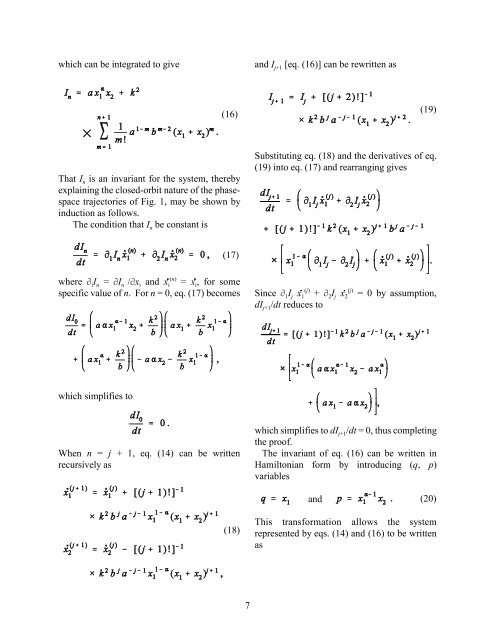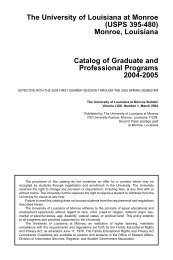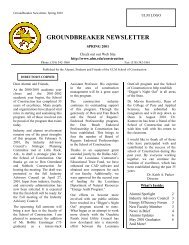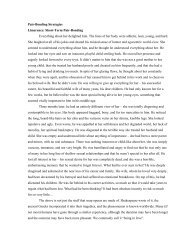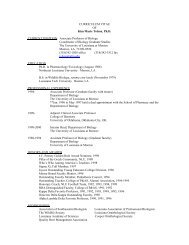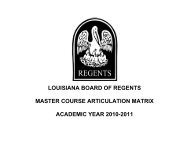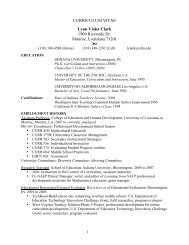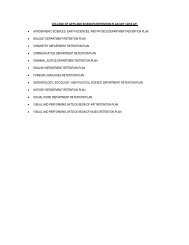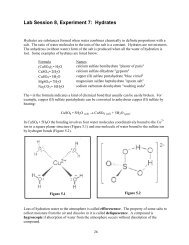Analytic Solutions to a Family of Lotka-Volterra Related Differential ...
Analytic Solutions to a Family of Lotka-Volterra Related Differential ...
Analytic Solutions to a Family of Lotka-Volterra Related Differential ...
You also want an ePaper? Increase the reach of your titles
YUMPU automatically turns print PDFs into web optimized ePapers that Google loves.
which can be integrated <strong>to</strong> give<br />
and I j+1 [eq. (16)] can be rewritten as<br />
(16)<br />
(19)<br />
That I n is an invariant for the system, thereby<br />
explaining the closed-orbit nature <strong>of</strong> the phasespace<br />
trajec<strong>to</strong>ries <strong>of</strong> Fig. 1, may be shown by<br />
induction as follows.<br />
The condition that I n be constant is<br />
Substituting eq. (18) and the derivatives <strong>of</strong> eq.<br />
(19) in<strong>to</strong> eq. (17) and rearranging gives<br />
(17)<br />
where M i I n = MI n /Mx i and x0 i<br />
(n)<br />
= x0 i , for some<br />
specific value <strong>of</strong> n. For n = 0, eq. (17) becomes<br />
Since M 1 I j x0 1<br />
(j)<br />
+ M 2 I j x0 2<br />
(j)<br />
= 0 by assumption,<br />
dI j+1 /dt reduces <strong>to</strong><br />
which simplifies <strong>to</strong><br />
When n = j + 1, eq. (14) can be written<br />
recursively as<br />
which simplifies <strong>to</strong> dI j+1 /dt = 0, thus completing<br />
the pro<strong>of</strong>.<br />
The invariant <strong>of</strong> eq. (16) can be written in<br />
Hamil<strong>to</strong>nian form by introducing (q, p)<br />
variables<br />
and<br />
(20)<br />
(18)<br />
This transformation allows the system<br />
represented by eqs. (14) and (16) <strong>to</strong> be written<br />
as<br />
7


